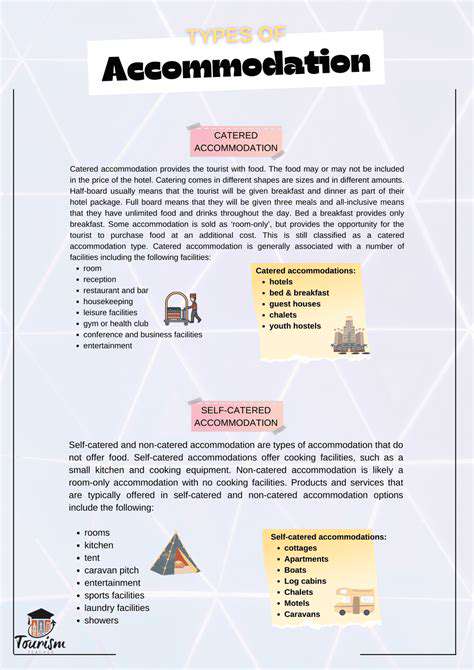What to Do If You Lose Your Passport Abroad
Obtaining Emergency Travel Documents
Understanding the Urgency
Losing your passport abroad, especially when you're in the middle of a trip or have a pressing need to return home, is a deeply stressful situation. The immediate need to obtain emergency travel documents is paramount to ensure your safety and well-being while navigating the complexities of international travel procedures. Understanding the urgency of this situation is critical to initiating the correct steps for expedited processing.
Prompt action is vital to minimizing the disruption to your travel plans and ensuring that your situation is handled efficiently. Delays in obtaining the necessary documents can significantly impact your ability to return home or continue your journey, and it's important to recognize the immediate need to address this critical issue.
Identifying Your Options
When your passport is lost or stolen, there are several options available for obtaining emergency travel documents. These options can vary based on your location, the circumstances of the loss, and the specific policies of your home country's embassy or consulate. It's crucial to research these options and determine the most appropriate course of action for your situation. This research will help you prioritize the most effective steps to take, ensuring a smoother process.
Contacting Your Embassy or Consulate
Reaching out to your country's embassy or consulate is the first crucial step in obtaining emergency travel documents. Their expertise and knowledge of international travel protocols are invaluable in guiding you through the necessary procedures. They can provide specific instructions, guidance, and support tailored to your unique situation. This contact also enables you to gather information on the required forms, fees, and any supporting documentation that may be needed.
Gathering Required Documentation
To expedite the process of obtaining emergency travel documents, it's essential to gather all necessary documentation promptly. This includes photocopies of your lost passport, proof of your identity (such as a driver's license or national ID card), and any relevant travel itinerary or booking confirmations. Thorough preparation minimizes delays and ensures that the embassy or consulate has all the necessary information to process your request quickly and efficiently. This proactive approach facilitates a smooth transition back to your home country or the continuation of your journey.
Applying for Emergency Travel Documents
The application process for emergency travel documents will vary depending on the country and the circumstances. It's important to follow the specific instructions provided by your embassy or consulate. This often involves completing forms, providing the required documentation, and paying any associated fees. You should be prepared to answer questions about your travel plans and the circumstances surrounding the loss of your passport. Careful attention to detail during this process will significantly increase the likelihood of a swift resolution.
Understanding Potential Delays
While prompt action is crucial, it's important to understand that delays can sometimes occur in the process of obtaining emergency travel documents. These delays can be influenced by factors such as high demand, processing times, or the need for additional verification. Understanding that delays are possible will help you manage expectations and plan accordingly. It's advisable to factor in potential delays when making travel arrangements or scheduling your return to your home country.

Important Considerations for Future Travel

Long-Term Vision
A crucial aspect of future planning involves developing a clear long-term vision. This vision should encompass not only the immediate goals but also the anticipated trajectory of the organization or project over the next decade or more. Foresight is essential in navigating potential challenges and capitalizing on emerging opportunities. A well-defined vision provides a framework for decision-making and ensures that actions are aligned with the overarching strategic objectives.
Consideration should be given to the potential impact of technological advancements, evolving market trends, and societal shifts. Anticipating these factors allows for proactive adaptation and fosters resilience in the face of change.
Resource Allocation
Effective resource allocation is paramount to achieving future goals. This involves a careful evaluation of available resources, both human and financial, and their potential application across different initiatives. Strategic prioritization is key to maximizing the impact of limited resources. It's crucial to allocate resources based on their potential contribution to the overall vision and long-term objectives.
A comprehensive plan must include contingency plans for unexpected events or setbacks. This ensures that resources can be redirected or reallocated as needed to minimize disruptions and maintain momentum.
Risk Management
Identifying and mitigating potential risks is essential for successful future endeavors. A proactive approach to risk management allows for the development of contingency plans and the implementation of preventive measures. Thorough risk assessment enables informed decision-making and reduces the likelihood of unforeseen consequences. This crucial step often involves collaborating with experts from various fields to gain a comprehensive understanding of potential threats.
Understanding the potential impact of different risks is equally important. This involves quantifying the potential losses or gains associated with each risk and evaluating their likelihood of occurrence.
Market Analysis
A thorough understanding of the market landscape is essential for future success. This involves conducting comprehensive market research to identify trends, analyze competitor activities, and assess emerging opportunities. This information is vital for making informed decisions about product development, marketing strategies, and business expansion. Staying ahead of the curve in understanding market dynamics is critical for adapting to changing consumer preferences and competitive pressures.
Technological Advancements
The rapid pace of technological advancement requires constant adaptation and innovation. Future strategies must incorporate a proactive approach to integrating new technologies and leveraging their potential benefits. Incorporating technology into existing processes can lead to increased efficiency and improved outcomes. Recognizing and anticipating the impact of these advancements on the industry and the wider world is essential for long-term success.
Staying informed about emerging technologies and their potential applications is crucial. This includes attending industry conferences, reading relevant publications, and networking with tech experts.
Adaptability and Flexibility
The ability to adapt and be flexible is critical for navigating the uncertain future. Organizations and individuals must be prepared to adjust their strategies and approaches in response to changing circumstances. Embracing change and adapting to new situations is essential for achieving sustainable success. Rigidity can be detrimental in a rapidly evolving world.
Developing a culture of adaptability within the organization is crucial. This involves fostering open communication, encouraging experimentation, and providing opportunities for employees to develop new skills and knowledge.
Talent Acquisition and Development
Attracting and retaining top talent is critical for future success. Investing in employee development and creating a positive work environment is essential for fostering innovation and growth. Investing in employee training can lead to a more skilled and productive workforce. A skilled and motivated workforce is a vital component of any successful future strategy.
Identifying and nurturing future leaders is also crucial. This involves providing opportunities for development, mentoring, and leadership training to equip individuals with the skills and knowledge to drive innovation and growth.










